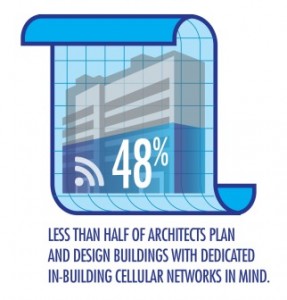The end of the line for Category 5e cabling?
The ISO/IEC standards body recently decided to upgrade the minimum cabling infrastructure requirement for offices, effectively marking the obsolescence of Category 5e by defining a minimum of Category 6, and recommending Category 6A. This is a brief overview of the drivers behind this development, and the implications to your cabling infrastructure decisions.

As the bandwidth requirements for wired and wireless applications continue to grow, a recent decision by the ISO/IEC cabling standards body that defines cabling infrastructure requirements is expected to have a significant impact on the choice of horizontal cabling in offices. For the first time in almost 20 years, the standards body has decided to upgrade the horizontal cabling in offices from a minimum of Class D (Category 5e) to a minimum of Class E (Category 6), and to recommend Class EA (Category 6A), for new installations.
Drivers behind the decision to upgrade the minimum requirement
A number of factors were taken into account to define the new minimum requirement, including:
1. Market dynamics A majority of customers are already choosing the higher categories. The standards body reviewed recent market data which indicates that shipments of Category 5e have been steadily declining since 2004. The 2014 installed base was estimated to include Category 5e at 26%, Category 6 at 56%, Category 6A at 17%, and Category 7 at 1%.
2. The emergence of new application drivers Wireless requirements, paradoxically, were identified as the first technology driver for higher bandwidth. IEEE 802.11ac WiFi access points are expected to require backhaul bandwidth in excess of 1 Gbps, prompting the formation of the IEEE P802.3bz™ 2.5/5GBASE-T Task Force. While the intent is to support 2.5 Gbps and 5 Gbps Ethernet over the installed base of Category 5e and Category 6 cabling, the lack of alien crosstalk specifications limits support to a subset of installed configurations, and mitigation steps may require component replacements in some cases.
3. The expected life of cabling Cabling installations are expected to have a useful life in excess of ten years, with twenty years being a common expectation. With this in mind, and considering the market dynamics as well as the emergence of technologies with requirements beyond those specified for Category 5e, the committee decided it was time to upgrade the minimum requirement for offices. The selection of Category 6 as the minimum reflects the fact that it is better suited than Category 5e to support 2.5 and 5 Gbps, while the recommendation for Category 6A takes into account the fact that applications beyond 1 Gbps will require alien crosstalk specifications.
Category 6A is recommended for all horizontal cabling since it provides the required performance to support these faster speeds up to 10 Gbps.
 Does this mean you need to upgrade your existing Category 5e cabling infrastructure?
Does this mean you need to upgrade your existing Category 5e cabling infrastructure?
Fortunately, significant industry efforts are being made to enable migration to 802.11ac Wireless Access Points by supporting up to 2.5 Gbps (and even up to 5 Gbps) over the large installed base of Category 5e. Although 2.5 or 5 Gbps may not be guaranteed for all installation configurations, standards bodies are developing qualification and mitigation procedures to maximize the chances to re-use the existing infrastructure.
Should you install Category 6, or Category 6A cabling in office environments?
Once the new standard is published, Category 6 will be the minimum required for compliance. However, the standard will recommend Category 6A to support applications with alien crosstalk requirements (meaning applications beyond 1 Gbps). While initial deployments of 2.5 and 5 Gbps are targeted at WiFi access points, industry analysts predict a gradual phasing out of 1 Gbps technology in favor of the faster speeds, as the technology becomes mainstream and prices decline. Category 6A is recommended for all horizontal cabling since it provides the required performance to support these faster speeds up to 10 Gbps. When do we expect the new standard to be published?
The standards development process can be slow at times, and it can be subject to technical and logistical delays. Based on current timelines, it is expected that the standard will be published in early 2017. This standards upgrade effectively marks the obsolescence of Category 5e and positions Category 6A as the optimal horizontal medium for new office installations, and the foundation for connected and efficient buildings.
This post is brought to you by CommScope.




